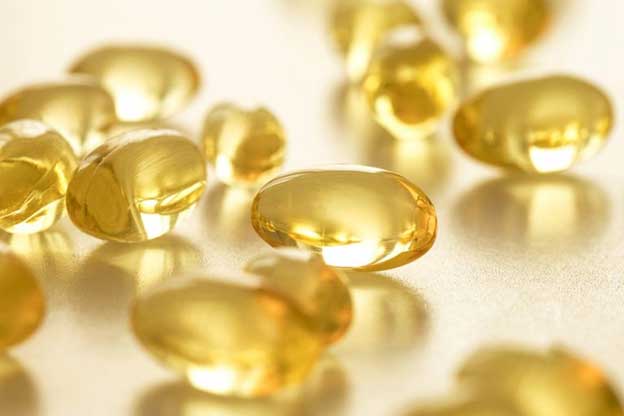
By Leslie Finlay
It’s great that you’re taking it—but are you absorbing it? Here’s why vitamin D can get blocked, and how you can help ensure that your body soaks it up.
You’ve got your morning wellness routine down: maybe it includes some exercise or a meditation, a little hydration and caffeination, breakfast, a multivitamin, and a couple of supplements. If your healthcare provider has approved a vitamin D supplement as part of your morning regimen, you’re so set up for a healthy day. But there are a few hints for taking vitamin D that can help you get the most out of your supplement.
Understanding this is important. In recent years, vitamin D deficiency has come under the spotlight because it’s extremely common—even in parts of the world with abundant sunshine, according to a study published in Nutrition Bulletin. Since the start of the pandemic, all this has gotten an even closer look, thanks to vitamin D’s role in immunity. Research published in 2020 in the Journal of the American Medical Association found that more than 80 percent of patients hospitalized for Covid-19 had low vitamin D levels.
What causes vitamin D deficiency?
You’ve probably heard that sunlight is a good source of vitamin D. Dana Ellis Hunnes, PhD, MPH, RD, Senior Dietitian at UCLA Medical Center and author of Recipe For Survival explains to The Healthy exactly how that works: our skin takes the ultraviolet (UV) rays from the sun and transforms them into cholecalciferol, an inactive form of vitamin D. The liver and kidneys then work to turn this substance into calcitriol, the biologically active form of vitamin D that’s critical to bone health and even immune function.
The Nutrition Bulletin research says that locations between latitudes 40 degrees North and 40 degrees South generally get enough sunlight to help human skin produce vitamin D year-round. In the Western hemisphere, this area extends from the southern part of Chile to cities like Philadelphia and San Francisco. People living outside of this range need to turn to food or supplements to keep their levels in check.
That’s why geographical location has long been considered the most important factor to determine someone’s vitamin D status—and their risk of deficiency. But there are several reasons you might not be making or absorbing as much vitamin D as your body needs, regardless of where you live…
Your lifestyle
As a population, we simply don’t spend as much time outdoors as we used to. And with skin cancer rates on the rise, according to the Skin Cancer Foundation, it’s becoming increasingly important to apply sunscreen or wear layers—both of which block vitamin D-producing rays from reaching your skin.
The environment
Research published in Scientific Reports in 2021 noted that air pollution can play a major role in blocking the UV rays our own bodies use to make vitamin D. What’s more, if the air quality is too poor for you to go outdoors, your skin can’t absorb vitamin D-producing rays through windows, either, says Emilie Vandenberg, a registered dietitian at The Ohio State University Wexner Medical Center.
Your age
Research in Endocrinology & Metabolism Clinics of North America explained that as we get older, our skin doesn’t respond to UV light in the same way it did in our younger years. This causes vitamin D production to drop up to 50 percent.
Your genetics
According to the Nutrition Bulletin research, people with a naturally dark skin tone require up to five times more direct sun exposure to produce the same amount of vitamin D as someone with a lighter skin tone.
Your gut health
Certain digestive and gastrointestinal disorders, such as Crohn’s disease, irritable bowel syndrome (IBS), or short bowel syndrome (SBS, or short gut) can block nutrient absorption in the gut—and that includes any dietary or supplementary vitamin D, Hunnes says. Cystic fibrosis, celiac disease, and chronic pancreatitis are also associated with poor vitamin D absorption.
In addition, some people don’t absorb fats efficiently in their gastrointestinal (GI) tract, which can prevent the vitamin D you eat from making it into your system, according to Vandenberg. While this can occur due to GI disorders like Crohn’s or IBS, long-term antibiotic use, damage due to infection or surgery (like gastric bypass), and radiation therapy can lead to nutrient absorption problems, too.
If you suspect that your body isn’t absorbing vitamin D, only a blood test can confirm if you have healthy levels. But here are some subtle signs of a vitamin D deficiency.

How do I make sure vitamin D is absorbed?
While the body can make its own vitamin D from sunlight, 2018 research in Nutrition Reviews explained that our GI tract can soak up the vitamin D we get through our diet and supplements as well. Here’s how you can help your gut do its job.
Take a D3 supplement
There are two forms of vitamin D available in supplement form: D2 and D3. “While both are well absorbed in the intestinal tract of healthy people, D3 appears to be better at increasing blood levels, according to research,” says Melina B. Jampolis, MD, and host of the podcast Practically Healthy by Dr. Melina.
Just make sure to check in with your doctor before adding any supplement to your routine (and understand that it’s possible to take too much vitamin D.)
Make vitamin D part of your largest meal of the day
One study conducted at the Cleveland Clinic Foundation Bone Clinic found that people who took vitamin D with their biggest meal of the day absorbed the nutrient better, leading to an average 50 percent increase in levels over three months.
Take vitamin D with a healthy fat
Vitamin D is a fat-soluble vitamin, which means that your body will absorb the nutrient more effectively with a source of fat, Vandenberg explains. In fact, a 2015 study in the Journal of the Academy of Nutrition and Dietetics found that fat helps our bodies absorb vitamin D 32 percent better.
Add some magnesium to your plate
The mineral magnesium may help your body activate and use vitamin D, according to 2018 research published in the Journal of the American Osteopathic Association. You can take a magnesium supplement or turn to foods like legumes, whole grains, leafy greens, and nuts to help get your daily fix.
Look for fortified foods—especially if you’re plant-based
Few foods are naturally high in vitamin D, and most come from animal sources. But foods fortified with vitamin D are widely available, including juices, milk (and types of plant-based milk), and cereals.
Optimize your microbiome
Gut health is essential to nutrient absorption, which is why conditions like Crohn’s or IBS can affect vitamin D levels. The state of your gut’s microbiome (its balance of good and bad bacteria) impacts how well it performs this and other functions.
A lot of factors impact your microbiome’s health, like genetics, lifestyle habits, and stress levels. But supplements called probiotics can help “feed” the good bacteria in your gut—and a 2021 study published in Nutrients found that when taken together, probiotics helped boost participants’ vitamin D levels. (https://www.thehealthy.com/nutrition/vitamins/vitamin-d-gut-absorb/)
























